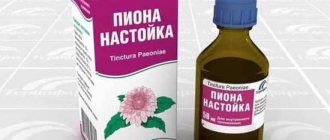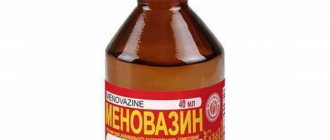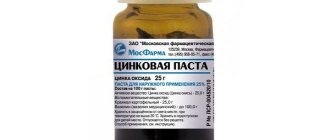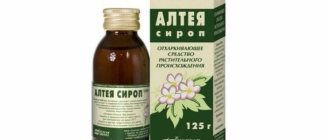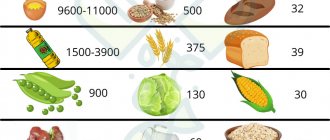Characteristics of the substance
Latin name of the substance : Bromhexinum
Formula : C14H20Br2N2
Chemical name : 2-Amino-3,5-dibromo-N-cyclohexyl-N-methylbenzenemethanamine. The preparations also contain it in the form of camsilate or hydrochloride.
Description : White crystalline powder, slightly soluble in water and alcohol.
Clinical and pharmacological group
- Mucolytic and expectorant drug
- Secretolytic and stimulator of motor function of the respiratory tract
Composition and release form
The drug is available in the form of tablets and syrup for oral administration. The tablets are white, coated with a special soluble coating. Packed in cardboard packaging up to 100 pieces.
Syrup of uniform color and consistency. Sold in dark glass bottles of 50, 60 or 100 ml.
The active substance of the drug is bromhexine. Its content in tablets and syrup varies from 4 to 8 mg. Auxiliary components: sucrose, pure water, ethyl alcohol, polysorbate, sodium hydrogen phosphate, eucalyptus oil.
Indications for use
Acute and chronic diseases of the respiratory tract, accompanied by the formation of difficult-to-discharge viscous secretions:
- pneumonia,
- tracheobronchitis,
- obstructive bronchitis,
- bronchial asthma,
- cystic fibrosis,
- emphysema,
- pneumoconiosis,
- pulmonary tuberculosis.
Sanitation of the bronchial tree in the preoperative period and during therapeutic and diagnostic intrabronchial manipulations, prevention of accumulation of thick viscous sputum in the bronchi after surgery.
What does Bromhexine help with?
Indications for taking Bromhexine are:
- Bronchiectasis.
- Tuberculosis.
- Bronchitis, predominantly obstructive.
- Cystic fibrosis.
- Pneumonia.
- Emphysema.
- Bronchial asthma.
In addition, the drug is prescribed before and after surgery to sanction the respiratory system and conduct diagnostic procedures.
Action
Pharmacological action - expectorant, mucolytic, antitussive.
The mucolytic effect is associated with the depolymerization of mucoprotein and mucopolysaccharide fibers and an increase in the serous component of bronchial secretions.
Reduces the viscosity of bronchial secretions by depolarizing the acidic polysaccharides it contains and stimulating the secretory cells of the bronchial mucosa, which produce secretions containing neutral polysaccharides.
Stimulates the production of endogenous surfactant, which ensures the stability of alveolar cells during breathing, their protection from unfavorable factors, improving the rheological properties of bronchopulmonary secretion, its sliding along the epithelium and the release of sputum from the respiratory tract.
Pharmacokinetics
Bromhexine is rapidly absorbed from the gastrointestinal tract and undergoes intensive metabolism during the “first pass” through the liver. Bioavailability is low, about 20%. In healthy patients, Cmax in plasma is determined after 1 hour.
Widely distributed in body tissues. The binding of bromhexine to plasma proteins is high. Penetrates through the blood-brain and placental barriers. In the liver it undergoes demethylation and oxidation. T1/2 in the terminal phase is about 12-15 hours. It is excreted in the urine mainly in the form of metabolites (ambroxol). The clearance of bromhexine or its metabolites may be reduced in patients with severe hepatic or renal impairment. May accumulate with repeated use.
Reception and dosage
Use the drug only according to the indications, method of administration and in those doses that are indicated in the official instructions or prescribed by a doctor.
Inside
- Adults and children over 14 years of age - 8-16 mg 3-4 times a day;
- children 6–14 years old and patients weighing less than 50 kg - 6–8 mg 3 times a day;
- children under 6 years old - 2–4 mg 3 times a day.
The duration of use depends on the course of the disease (usually no more than 4–5 days). If renal function decreases or severe liver disease, the dose should be reduced or the intervals between doses should be increased.
Inhalations
- Adults - 8 mg,
- children over 10 years old - 4 mg,
- at the age of 6–10 years - 2 mg,
- at the age of up to 6 years, use in doses of up to 2 mg.
Inhalations are carried out 2 times a day. The therapeutic effect may appear on days 4-6 of treatment.
Injections
Parenteral administration is recommended for treatment in severe cases, as well as in the postoperative period to prevent the accumulation of thick sputum in the bronchi. Administer 2 mg subcutaneously, intramuscularly or intravenously 2-3 times a day slowly over 2-3 minutes.
Restrictions
For diseases
Use under medical supervision:
- for diseases of the respiratory tract accompanied by excessive accumulation of secretions;
- with a history of gastric ulcer or gastric bleeding;
- with renal and/or liver failure;
- for bronchial asthma.
For children
Use with caution in children - according to indications, in doses and dosage forms recommended according to age.
Pregnancy and lactation
Use is contraindicated in the first trimester of pregnancy. Use in the II-III trimesters of pregnancy and during breastfeeding is possible only in cases where the expected benefit to the mother outweighs the potential risk to the fetus or infant.
Contraindications
The drug is contraindicated for use in the following cases:
- Ulcerative processes of the gastrointestinal tract in the acute period.
- Children under 2 years old.
- Breast-feeding.
- Individual intolerance to the drug.
- Allergy to sucrose.
- Women during pregnancy in the first trimester.
Bromhexine should be prescribed with caution to persons with impaired renal and liver function, diabetes mellitus, a large accumulation of exudate in the bronchopulmonary system, and pregnancy in the 2nd and 3rd trimester.
special instructions
During treatment, it is recommended to consume a sufficient amount of fluid, which supports the secretolytic effect of bromhexine.
In cases of impaired bronchial motility or with a significant volume of sputum secretion, the use of bromhexine requires caution due to the risk of retention of secretions in the respiratory tract.
In children, treatment should be combined with postural drainage or vibration massage of the chest, which facilitates the removal of secretions from the bronchi.
Side effect
Nervous system and sensory organs
Dizziness, headache.
Digestive system
Nausea, vomiting, dyspeptic disorders, abdominal pain, exacerbation of gastric and duodenal ulcers, increased activity of liver transaminases.
Respiratory system
Cough, bronchospasm.
Allergic reactions
Skin rashes, itching, urticaria, rhinitis, angioedema.
Other
Shortness of breath, increased body temperature, chills, increased sweating.
Stevens-Johnson and Lyell syndromes have been reported very rarely. If changes occur on the skin or mucous membranes, the drug should be stopped.
It is also possible to develop side effects caused by excipients.
Side effects of the drug Bromhexine Berlin-Chemie
When analyzing side effects, the following frequencies of occurrence were taken as a basis: very often (≥1/10), often (≥1/100 and ≤1/10), sometimes (≥1/1000 and ≤1/100), rarely (≥ 1/10,000 and ≤1/1000), very rare (≤1/10,000), unknown (available information does not allow us to evaluate this effect). Allergic reactions: sometimes - fever, hypersensitivity reactions (skin rash, angioedema, breathing problems, itching, urticaria), bronchospasm; very rarely - anaphylactic reactions, including anaphylactic shock. From the gastrointestinal tract: sometimes - nausea, pain in the epigastric region, vomiting, diarrhea, dyspeptic symptoms, a transient increase in the level of aminotransferase activity in the blood plasma. Skin disorders: very rarely - Stevens-Johnson syndrome, Lyell's syndrome.
Overdose
Symptoms: increased adverse reactions. Nausea, vomiting, diarrhea and other gastrointestinal disorders.
Treatment: artificial vomiting, fluid intake (milk or water) in the first 1–2 hours after administration, symptomatic therapy.
In children : Since children over 2 years of age, even after taking large doses of bromhexine, only mild symptoms are expected, detoxification may not be necessary with a dose of bromhexine hydrochloride up to 80 mg (for example, 100 ml of Bromhexine). In younger children, the appropriate dose limit is 60 mg bromhexine hydrochloride (6 mg/kg body weight).
Life-threatening overdoses with bromhexine in humans are unknown. There is no evidence of chronic toxicity.
> Home > Drugs > Full list > Over-the-counter drugsTrade name: Bromhexine 4 Berlin - Hemi
International nonproprietary name: bromhexine
Chemical name: N - (2-amino-3,5 - dibromobenzyl) - N - methylcyclohexanamine hydrochloride
Dosage form: oral solution
Composition per 100 ml solution:
Active ingredient: bromhexine hydrochloride – 0.08 g;
Excipients: propylene glycol, sorbitol, apricot-scented aromatic concentrate, hydrochloric acid 0.1 M (3.5%) solution, purified water.
Description: transparent, colorless, slightly viscous liquid with a characteristic apricot odor.
Pharmacotherapeutic group: expectorant mucolytic agent
ATX code: R05CB02
Pharmacological properties
Pharmacodynamics
Bromhexine has a mucolytic (secretolytic) and expectorant (secretomotor) effect. Reduces the viscosity of sputum; activates the ciliated epithelium, increases the volume of sputum and improves its discharge. Stimulates the production of endogenous surfactant, which ensures the stability of alveolar cells during respiration. The effect appears within 2-5 days from the start of treatment.
Pharmacokinetics
Suction. After oral administration, bromhexine is quickly and almost completely absorbed from the gastrointestinal tract. The half-life of absorption is about 0.4 hours. The maximum concentration in the blood plasma after oral administration is reached after 1 hour.
Distribution. The volume of distribution is approximately 7 l/kg body weight. The degree of binding to plasma proteins is 99%. Bromhexine penetrates the blood-brain barrier and the placental barrier. Penetrates into breast milk and cerebrospinal fluid. Bromhexine does not accumulate.
Metabolism. 80% of bromhexine undergoes a “first pass” effect through the liver with the formation of biologically active metabolites. In severe liver diseases, a decrease in the clearance of bromhexine is observed.
Excretion. Bromhexine is excreted from the body mainly in the form of metabolites. The half-life to achieve the minimum effective concentration after achieving equilibrium between the processes of absorption and excretion is approximately 1 hour. The final half-life is approximately 16 hours due to the reverse distribution of small amounts of bromhexine from tissues.
It is excreted primarily by the kidneys in the form of metabolites formed in the liver. Due to the high degree of binding to plasma proteins and the high volume of distribution, as well as the slow redistribution from tissues to the blood, significant elimination of bromhexine by dialysis or forced diuresis should not be expected.
In severe renal failure, an increase in the half-life of bromhexine metabolites cannot be excluded. Nitrosation of bromhexine is possible under physiological conditions in the stomach.
Indications for use
Secretolytic therapy for acute and chronic bronchopulmonary diseases associated with impaired secretion and transport of sputum (for example, acute and chronic bronchitis, bronchiectasis, tracheobronchitis, pneumonia, emphysema, cystic fibrosis, tuberculosis, pneumoconiosis).
Contraindications
- hypersensitivity to bromhexine and other components of the drug;
- peptic ulcer of the stomach and/or duodenum (including a history);
- pregnancy (first trimester);
- breastfeeding period;
- children under 2 years of age;
- congenital fructose intolerance.
Carefully
- renal and/or liver failure;
- in case of impaired bronchial motility, accompanied by excessive accumulation of secretions;
- children aged from 2 to 6 years (used as prescribed by a doctor).
Use during pregnancy and breastfeeding
The use of the drug in the first trimester of pregnancy is contraindicated. In the second and third trimesters of pregnancy, the use of the drug is possible only if the expected benefit to the mother outweighs the possible risk to the fetus. The use of the drug during breastfeeding is contraindicated.
Directions for use and doses
Oral solution. 1 measuring spoon contains 5 ml of solution.
Unless otherwise prescribed, the following doses are recommended:
Adults and adolescents over 14 years of age: 3 times a day, 2-4 scoops (24-48 mg of bromhexine per day).
Children from 6 to 14 years of age, as well as patients weighing less than 50 kg: 3 times a day, 2 scoops (24 mg of bromhexine per day).
Children from 2 to 6 years: 3 times a day, 1 measuring spoon (12 mg of bromhexine per day) - used as prescribed by a doctor.
In case of impaired renal function and/or severe liver disease, the intervals between doses should be increased or the dose reduced. You should consult your doctor on this issue.
During therapy with Bromhexine 4 Berlin-Chemie, it is recommended to drink sufficient amounts of fluid.
Bromhexine 4 Berlin-Chemie should not be taken for more than 4-5 days without consulting your doctor. The duration of use is determined by the doctor individually and depends on the indications and course of the disease.
Side effect
Possible side effects are listed below in descending frequency of occurrence: very common (>1/10), common (>1/100, >1/10), uncommon (>1/1000, >1/100), rare (>1/100) 10000, <1/1000), very rare, including isolated reports (<1/10000), frequency not established (cannot be estimated from available data).
From the gastrointestinal tract
Uncommon: nausea, vomiting, diarrhea, abdominal pain;
From the immune system
Rarely: hypersensitivity reactions;
Frequency not established: anaphylactic reactions, including anaphylactic shock, angioedema, pruritus.
From the skin and subcutaneous tissues
Rarely: skin rash, urticaria;
Frequency not established: severe skin reactions, including erythema multiforme, Stevens-Johnson syndrome, toxic epidermal necrolysis (Lyell's syndrome), acute generalized exanthematous pustulosis (see section "Special instructions").
General violations
Uncommon: fever.
In case of all forms of allergic reactions (hypersensitivity, anaphylaxis) or in the event of any damage to the skin and/or mucous membranes, you must stop taking this drug and immediately inform your doctor.
Overdose
Life-threatening symptoms of overdose with Bromhexine 4 Berlin-Chemie are unknown.
Symptoms: A study of overdose cases has been published, according to which vomiting was observed in 4 out of 25 overdose cases. Three children experienced vomiting, as well as stunned consciousness, ataxia, diplopia, mild metabolic acidosis, and tachypnea. In children, symptoms did not occur when taking bromhexine at doses up to 40 mg, even in the absence of treatment.
There is no evidence of chronic toxicity of bromhexine in humans.
Treatment: in case of severe overdose, monitoring of blood circulation and, if necessary, symptomatic treatment are indicated. Due to the low toxicity of bromhexine, as a rule, there is no need for invasive measures aimed at reducing its absorption (forced vomiting, gastric lavage) or accelerating excretion. In addition, due to the pharmacokinetics (high volume of distribution, slow redistribution processes and high degree of protein binding), effective removal of bromhexine from the body by dialysis or forced diuresis should not be expected.
Since in children over 2 years of age, even after taking large doses of bromhexine, only mild symptoms are expected, with a dose of bromhexine hydrochloride up to 80 mg (for example, 100 ml of Bromhexine 4 Berlin-Chemie), detoxification may not be necessary. In younger children, the appropriate dose limit is 60 mg bromhexine hydrochloride (6 mg/kg body weight).
In case of overdose, it is also possible to develop side effects caused by excipients.
Interaction with other drugs
Bromhexine 4 Berlin-Chemie can be prescribed simultaneously with other drugs used in the treatment of bronchopulmonary diseases.
Bromhexine is not prescribed simultaneously with antitussives (including those containing codeine), because due to the suppression of the reflex, the evacuation of liquefied sputum is difficult, which can lead to the accumulation of secretions in the respiratory tract.
Bromhexine 4 Berlin-Chemie promotes the penetration of antibiotics (erythromycin, cephalexin, oxytetracycline, ampicillin, amoxicillin) into bronchial secretions in the first 4-5 days of antimicrobial therapy. The clinical significance of this possible interaction has not been proven.
When used simultaneously with drugs that irritate the gastrointestinal tract (for example, some non-steroidal anti-inflammatory drugs), the irritant effect of the latter on the gastric mucosa may be increased.
special instructions
In cases of impaired bronchial motility or with a significant volume of sputum secreted (for example, in the rare syndrome of primary ciliary dyskinesia), the use of Bromhexine 4 Berlin-Chemie requires caution due to the increased risk of airway obstruction.
In case of impaired renal function and severe liver disease, Bromhexine 4 Berlin-Chemie should be used with extreme caution (for example, it is recommended to reduce the dose or increase the intervals between doses). In severe renal failure, it is necessary to take into account the possibility of accumulation of metabolites formed in the liver.
Monitoring of liver function is recommended, especially during long-term treatment.
There is evidence of the occurrence in very rare cases of severe skin reactions (such as erythema multiforme, Stevens-Johnson syndrome, toxic epidermal necrolysis, acute generalized exanthematous pustulosis) while taking bromhexine.
If allergic reactions and/or signs of progressive skin rash occur (sometimes in combination with the appearance of blisters and damage to the mucous membranes), you should immediately stop using the drug and consult a doctor.
The use of Bromhexine 4 Berlin-Chemie in children over 2 years of age is possible only under the supervision of a physician.
Propylene glycol, which is part of the drug Bromhexine 4 Berlin-Chemie, can cause symptoms in children similar to those that occur after drinking alcohol.
Instructions for patients with diabetes: 5 ml of solution (1 scoop) contains 2 g of sorbitol (equivalent to 0.5 g of fructose), which corresponds to 0.17 bread units.
Sorbitol may have a slight laxative effect.
The effect of the drug on the ability to drive vehicles and machinery
When taken in recommended doses, Bromhexine 4 Berlin-Chemie does not affect the speed of psychomotor reactions.
Release form
Oral solution 4 mg/5 ml.
60 or 100 ml of solution in dark glass bottles with a screw-on plastic or aluminum stopper with a sealing gasket.
1 bottle complete with a measuring spoon along with instructions for use is placed in a cardboard box.
Storage conditions
At a temperature not higher than 25 oC.
Keep the medicine out of the reach of children!
Best before date
3 years.
3 months - after the first opening of the bottle.
Do not use after the expiration date stated on the packaging.
Vacation conditions
Available without a prescription.
Manufacturer
Berlin-Chemie AG
Glinker Weg, 125
12489 Berlin, Germany
Organization receiving complaints from consumers:
LLC "Berlin-Chemie/A. Menarini", Russia
123112, Moscow, Presnenskaya embankment, building 10, Business Center "Tower on the Embankment", Blok, tel., fax.
Interaction
Bromhexine is not prescribed simultaneously with codeine-containing antitussive drugs, because due to the suppression of the cough reflex, the evacuation of liquefied sputum is difficult, which can lead to the accumulation of secretions in the respiratory tract.
The combination of glaucine + ephedrine + basil oil is not recommended for use simultaneously with bromhexine - due to difficulty in coughing up sputum.
When used simultaneously with some NSAIDs, it is possible to increase the irritant effect of the latter on the gastric mucosa.
Bromhexine is incompatible with alkaline solutions.
Bromhexine can be prescribed simultaneously with other drugs used in the treatment of bronchopulmonary diseases.
Promotes the penetration of antibiotics (erythromycin, cephalexin, oxytetracycline) and sulfonamide drugs into bronchial secretions, leading to an increase in the concentration of antibiotics in lung tissue.
Pharmacological properties of the drug Bromhexine Berlin-Chemie
Bromhexine - cyclohexyl-N-methyl-(2-amino-3-5-dibromobenzyl)-aminochloride - is a synthetic derivative of the active substance (vasicin) of plant origin. Bromhexine has a secretolytic and secretomotor effect in the bronchial tract, as a result of which bronchial secretion increases, the viscosity of mucus (sputum) decreases, and the activity of the ciliated epithelium increases, which promotes the evacuation of mucus (sputum). The simultaneous use of bromhexine with amoxicillin, erythromycin and oxytetracycline leads to a local increase in the concentration of these antibiotics in sputum and bronchial secretions. After oral administration, bromhexine is almost completely absorbed. The half-life is approximately 0.4 hours. The first-pass effect is approximately 80%, with the formation of biologically active metabolites. Bromhexine does not accumulate. Plasma protein binding is 99%. Bromhexine penetrates the placenta, into the cerebrospinal fluid and into breast milk. It is excreted mainly by the kidneys in the form of metabolites.
